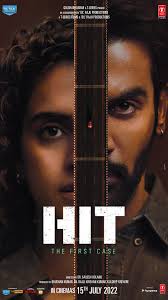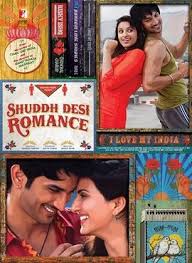Gripping from the very first frame, this Hindi adaptation of HIT: The First Case, directed by Sailesh Kolanu, plunges viewers into a world filled with suspense, danger, and psychological tension. Starring Rajkummar Rao and Sanya Malhotra, the film is set in the bustling city of Jaipur, with its story unfolding in the present day. The crime-thriller genre is at the core of the film as it navigates a chilling investigation that shakes both the police force and the public.
The plot centers on Vikram, a police officer in the Homicide Intervention Team (HIT), whose brilliant mind is haunted by personal trauma. He is battling PTSD from a tragic event in his past, which has left him with panic attacks and emotional scars. Despite his mental health struggles, Vikram is committed to his work. The film follows his investigation into the mysterious disappearance of a young woman, which becomes more intense when someone close to him goes missing as well. As Vikram digs deeper into the case, his personal and professional lives begin to blur, leading to high-stakes moments that keep the audience on edge. The narrative tightly holds onto its secrets, making every scene a step closer to the truth without ever revealing too much too soon.
One of the standout aspects of the film is Rajkummar’s performance. Known for his versatility, he brings an emotional depth to Vikram that makes the character feel real and relatable. His portrayal of a man who is tough on the outside but crumbling within is both intense and poignant. He masterfully conveys the internal battle of someone who is determined to solve a case but is simultaneously at war with his own mind. Sanya, though her role is more limited compared to Rajkummar’s, delivers a strong performance as Neha, Vikram’s girlfriend. She adds a soft, emotional layer to the film, grounding it with her warmth, and making Vikram’s stakes in the investigation more personal. Together, their chemistry is understated but palpable, which helps in humanizing the thriller.
The direction by Sailesh is sharp and focused. Unlike many thrillers that rely on excessive action sequences, the tension here is built through mood and atmosphere. The pacing is deliberate, allowing the story to unfold at its own speed. Sailesh smartly uses silence, pauses, and close-up shots to emphasize the psychological unease that Vikram is experiencing. Editing by Garry BH is crisp, ensuring that the narrative remains tight, with no unnecessary diversions. The transitions between Vikram’s flashbacks and present-day investigation are smooth, adding layers to his character without feeling disjointed.
In terms of cinematography, S. Manikandan does an exceptional job capturing the dark and brooding atmosphere of the film. The use of shadows and muted tones throughout the movie intensifies the suspense, while Jaipur’s bustling streets serve as an interesting contrast to the eerie, deserted locations where key scenes unfold. The visuals are sharp and well-composed, helping to convey the tense, nerve-wracking tone of the film. Special effects are minimal but effective, and the action scenes are shot with a gritty realism that doesn’t feel over the top, keeping the film grounded in a sense of reality.
The music by John Stewart Eduri is haunting and complements the film’s somber mood. Rather than overwhelming the scenes with loud, dramatic scores, the soundtrack subtly weaves through the film, enhancing the feeling of dread and anxiety that permeates the story. The sound design plays a crucial role in maintaining the suspense, particularly in scenes where the silence is interrupted by sudden noises or Vikram’s panic attacks, further drawing the audience into his psychological turmoil. The background score builds tension without distracting from the plot, which is vital in a film like this where emotions and atmosphere are key.
The script is another strong element, focusing not just on the crime aspect but also delving into themes of trauma, mental health, and personal loss. The dialogues feel authentic, and the interactions between characters, particularly Vikram and his colleagues, are natural and add to the film’s grounded tone. While the case at the heart of the film is intriguing, it is Vikram’s personal journey that truly drives the story forward, making the audience root for him not just as a cop solving a case but as a human being struggling to overcome his inner demons.
Overall, the Hindi version of HIT is a well-crafted thriller that succeeds in keeping the audience hooked from start to finish. Rajkummar’s stellar performance, combined with Sailesh’s tight direction and the film’s immersive atmosphere, make it a standout in the crime-thriller genre. If you enjoy psychological thrillers that focus more on character and mood rather than just plot twists and action, this film is a must-watch. It doesn’t rely on cheap thrills or overdone clichés; instead, it offers a gripping, slow-burn investigation that rewards patient viewers with its emotional depth and satisfying conclusion.
For fans of crime dramas and psychological thrillers, this one is definitely worth the watch. The film strikes the right balance between being a gripping police procedural and a deep character study, making it an engaging watch for those looking for something more nuanced than your typical whodunit.







